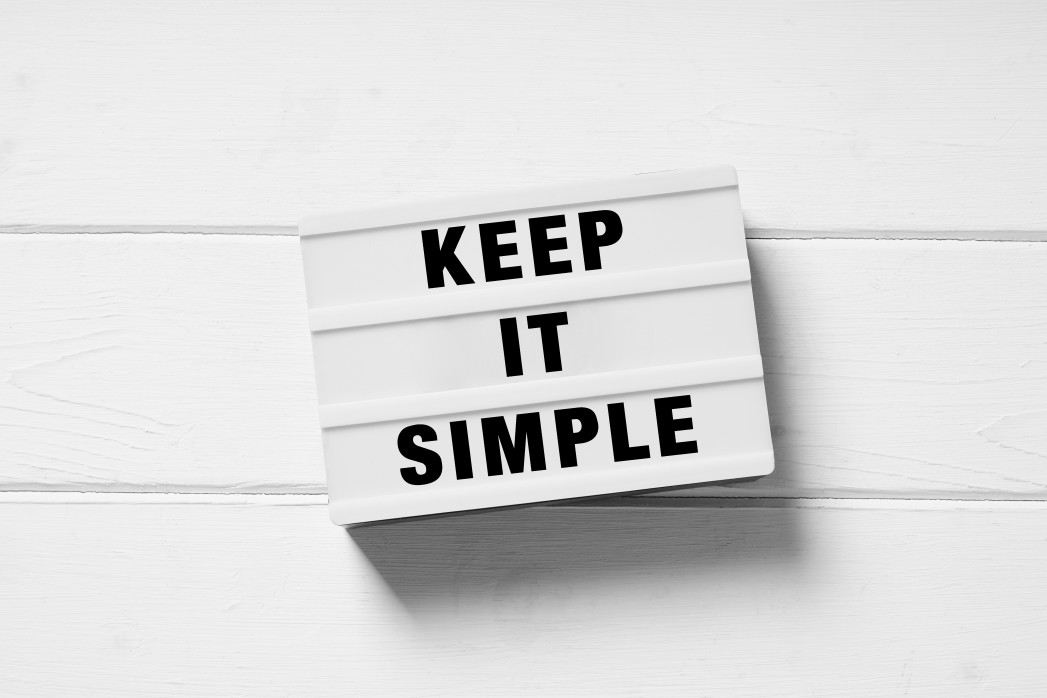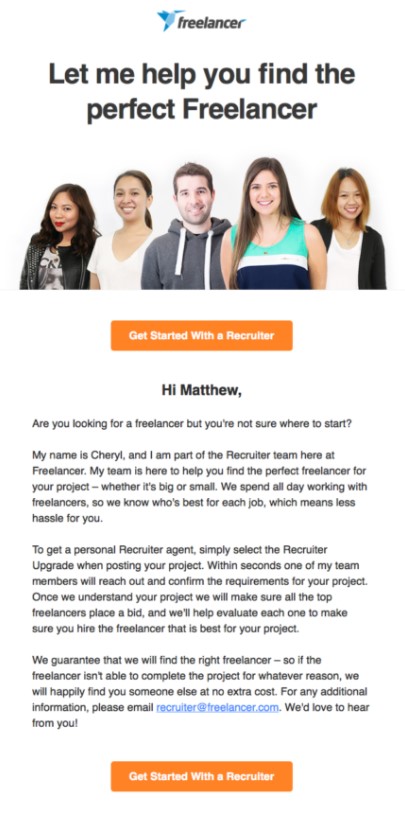Recruitment Email Marketing: Importance, Templates, and Strategies
Let’s start with a fact: The days of “post and pray” have gone away.
Today’s talent market is highly competitive, with candidates doing extensive research on your company before they even think about applying.
To source, engage, and convince candidates, modern-day recruiters must fulfill the usual recruiting responsibilities, while leveraging the tools of high-level marketing experts - from interactive landing pages to social media to search engine optimization.
In comparison with other tools, email marketing proves itself to be a strong “secret weapon” in the process. In spite of its (relatively) extensive history, email marketing is just as vital as ever, with over 290 billion emails sent every day.
The question is : How can you manage to stand out and grab your dream candidates’ attention?
By showing you the importance, templates, and strategies for your recruitment email marketing campaign, this blog post can help you find the answer. Let’s explore!
Why is email marketing important to recruiters?
Let’s read the following statistics:
- Email marketing is actually 40 times more successful at acquiring new clients than both Facebook and Twitter combined.
- You’re 6 times more likely to receive a click-through from an email campaign than you’re from a tweet.
- Segmented and targeted emails generate 58% of all revenue for businesses.
- 42% of B2B organizations believe email is one of the most effective lead generators for targeting new clients.
These statistics alone are a great reason in order to incorporate email marketing into your recruitment process. Besides, we all know that using email marketing for ATS recruitment and hiring allows you to target potential candidates qualified for your job openings. Whether they’re active or passive job seekers, you’re able to attract, nurture, and convert them into applicants with the right emails.
However, many HR (Human Resource) teams have yet to consider or effectively execute email marketing campaigns, often continuing to apply dated, manual methods. These fail to cut through the noise as well as reach their intended audience. This failure can be extremely damaging to an organization’s recruitment efforts, and is really a waste of potential.
5 essential recruiting email templates
Follow the 5 recruiting email templates right below to keep candidates informed and engaged throughout your hiring process.
1. Sourcing email templates

When you reach out to prospects for the first time, be clear in your approach. Your primary objective when sending an outreach email is to stand out and cut to the chase.
#1. First-touch sourcing email
Send an outreach email to a potential candidate only after you’ve researched them thoroughly. Review their profiles and vet their preliminary qualifications. In addition, take note of personal details that you can include in your email. Remember, personalization is key to compelling the candidate to apply.
Because you haven’t had a relationship with this candidate, you cannot expect them to read a long-winded email from you. Instead, keep your message short and sweet with only the most essential information.
Here’s how you can write your first-touch sourcing email:
Subject Line: Job Opportunity - [JOB TITLE] Role at [YOUR COMPANY NAME]
Hi [CANDIDATE’s FIRST NAME],
I came across your profile on [WHERE YOU FOUND THEM], and wanted to reach out regarding a unique opportunity.
I’m working for [YOUR COMPANY NAME] and we are looking to hire a [JOB TITLE]. I think your experience in [SKILL/ FIELD] is a great fit for this role.
If you are interested, I’d love to connect. So, would you be available for a phone call on [DATE & TIME]?
I’m looking forward to hearing from you soon.
Best,
[YOUR NAME]
[YOUR EMAIL SIGNATURE]
#2. Second-touch sourcing email
The purpose of this email is to reach out to past stand-out candidates that didn’t receive or accept your offer. Compare their qualifications against the candidate persona in order to make sure that they would be an excellent fit before you ask them to reapply to your organization.
As you already have a relationship with the candidate, try to personalize the email as much as possible. This will show that you really value them as an individual contributor, not just a resume in a pile.
Here’s how you can write your second-touch sourcing email:
Subject Line: A New Job Opportunity at [YOUR COMPANY NAME] - [JOB TITLE]
Hi [CANDIDATE’s FIRST NAME],
I hope this email finds you well. I know you applied to our [PREVIOUS POSITION] back in [MONTH or YEAR]. While we then went in a different direction, we kept you top of our mind.
A [JOB TITLE] role just opened up at our company and given your profile, I think you’d be a great fit.
I would love to reconnect, discuss the role, and hear about what you have been up to since we last spoke. So, would you be available for a phone call on [DATE & TIME]?
I’m looking forward to hearing from you soon.
Best,
[YOUR NAME]
[YOUR EMAIL SIGNATURE]
2. Interview email templates
There are several stages during the interview process, and candidates should be aware of their status during each.

#1. Interview invitation email
The interview invitation email is a vital step in keeping the candidate excited about the opportunity.
Ideally, you should give the candidate at least a few days’ notice, depending on whether you’ll conduct the interview in person, virtually, or over the phone. For top talent in highly sought-after positions, speak with them as soon as possible.
Here’s how you can write your interview invitation email:
Subject Line: [YOUR COMPANY NAME] Interview Availability
Hi [CANDIDATE’s FIRST NAME],
Thank you a lot for applying to the [JOB TITLE] role at [YOUR COMPANY NAME].
After reviewing your application, we’re excited to move forward with the interview process.
We’d like to schedule a [INTERVIEW FORMAT] with [INTERVIEWER] - [INTERVIEWER’S JOB TITLE] at [YOUR COMPANY NAME]. The interview will last about [LENGTH OF INTERVIEW].
Are you available on [DATE & TIME]?
Please directly reply to this email and let me know if you’re available at that time.
Best,
[YOUR NAME]
[YOUR EMAIL SIGNATURE]
#2. Interview confirmation email
After scheduling the interview, send a confirmation email to the candidate in order to restate the set time, location, and details.
Here’s how you can write your interview confirmation email:
Subject Line: [YOUR COMPANY NAME]: [INTERVIEW FORMAT] Interview Confirmation
Hi [CANDIDATE’s FIRST NAME],
We’ve confirmed your [INTERVIEW FORMAT] interview with [INTERVIEWER] on [DATE & TIME].
To give you a sense of what to expect, below is a brief agenda for the next interview:
[INTERVIEW AGENDA]
During the interview, you should plan to discuss your expertise in [TALKING POINTS].
We are looking forward to meeting you soon! You can find the interview details within the calendar event invitation. Should you have any questions in the meantime, don’t hesitate to reach out.
FOR IN-PERSON INTERVIEWS
Our office address is [ADDRESS]. Please check in at the front desk when you arrive. Our office dress code is [DRESS CODE], but please wear whatever you are most comfortable in.
FOR PHONE/ VIDEO INTERVIEWS
Here’s the [PHONE NUMBER/ MEETING LINK]. To enter the meeting room, please use this code: [ACCESS CODE].
Best,
[YOUR NAME]
[YOUR EMAIL SIGNATURE]
#3. Interview follow-up emails
Don’t wait so long to follow up after an interview if it’s someone you are highly interested in and excited about. Show them your interest and then encourage them to stay connected with your company by following up after a great interview.
Here’s how you can write your interview follow-up email:
Subject Line: [YOUR COMPANY NAME] Interview Follow-Up
Hi [CANDIDATE’s FIRST NAME],
Thank you a lot for taking the time to speak with us about the [JOB TITLE] role.
[INTERVIEWER] was very impressed by your experience. We believe you’ll become a good fit for the position and a strong addition to our growing [DEPARTMENT TEAM] at [YOUR COMPANY NAME].
We’ll be completing interviews this week, and you can expect to hear from us within [TIME FRAME].
Thank you once again for your time. It was such a great pleasure to get to know you better!
Best,
[YOUR NAME]
[YOUR EMAIL SIGNATURE]
3. Rejection email template

When it comes to interviews, no news is not good news. Letting candidates know they are no longer being considered for your open role is respectful of their time, as well as improves their experience.
Here’s how you can write your rejection email:
Subject Line: Your Application for [JOB TITLE] position at [YOUR COMPANY NAME]
Hi [CANDIDATE’s FIRST NAME],
Thank you a lot for applying to our [JOB TITLE] role and for speaking to us about your experience. We highly appreciate your interest in [YOUR COMPANY NAME].
We were so fortunate to have a strong group of candidates, and we regret to inform you that we’ve decided to pursue a more experienced candidate for this position.
[CONSTRUCTIVE FEEDBACK]
We’ll keep your resume on file and reach out if we think you would be a good fit for other roles if they become available.
We hope you'll stay engaged with us on [LINK TO YOUR SOCIAL PAGES] and keep an eye on our career page [LINK TO YOUR CAREER PAGE] for future opportunities that may be a better fit.
We highly appreciate your time and consideration of [YOUR COMPANY NAME].
All the best,
[YOUR NAME]
[YOUR EMAIL SIGNATURE]
4. Job offer email template

If you’re ready to extend an offer to a top candidate, it has to be perfect. If you have made a verbal offer over the phone, send a formal offer letter over email shortly after.
Here’s how you can write your job offer email:
Subject Line: [YOUR COMPANY NAME]: Enclosed Is Your [JOB TITLE] Offer Letter
Hi [CANDIDATE’s FIRST NAME],
It’s my pleasure to offer you the position of [JOB TITLE] at [YOUR COMPANY NAME]!
We were extremely impressed by you during the interview process, and we’re excited to have you join our company. We believe your skills as well as experience will make an excellent addition to our [DEPARTMENT] team.
Please thoroughly review the following offer details.
Position
This position is a [FULL-TIME/ PART-TIME/ TEMPORARY] role as [JOB TITLE] at [YOUR COMPANY NAME]. In this position, you’ll report to the direct manager in [DEPARTMENT].
As a [FULL-TIME/ PART-TIME/ TEMPORARY] staff, the position requires [HOURS/ WEEK]. Your working hours will be [START - END TIME] with a [30-MINUTE/ HOUR] break for lunch.
Your first working day will be [MONTH DAY, YEAR].
Compensation
[YOUR COMPANY NAME] will compensate you [DOLLARS] per [HOUR/ WEEK/ MONTH/ YEAR] for the stated position.
Benefits
As an employee of [YOUR COMPANY NAME], you’ll receive the following benefits:
[LIST OF BENEFITS]
In addition to these benefits, [YOUR COMPANY NAME] is also proud to offer [LIST OF PERKS].
Attached is your full offer letter. Please sign it to indicate your acceptance and agreement of the offer, and email it back to me by [DATE].
We are looking forward to welcoming you to the [COMPANY NAME] team. Should you have any questions regarding the attached offer, please contact me directly at [PHONE NUMBER].
All the best,
[YOUR NAME]
[YOUR EMAIL SIGNATURE]
5. Onboarding email template

Continue your outstanding candidate experience by helping employees well prepare for their first day on the job.
Here’s how you can write your onboarding email:
Subject Line: [YOUR COMPANY NAME]: Your Onboarding and First Day Details
Hi [CANDIDATE’s FIRST NAME],
We are looking forward to your first working day at [COMPANY NAME].
To help you prepare, below is some essential information about what you can expect:
Your Arrival
Please arrive no later than [TIME] at [COMPANY ADDRESS]. When you arrive, please check in with the receptionist to receive your temporary ID badge. You’ll be given an official badge after your start date.
Your Agenda
Attached is an agenda for your first working day. It’s subject to change slightly but that’s a good indicator of whom you will be meeting with.
Documents/ ID to bring
Please bring along the following forms of identification with you: [LIST OF DOCUMENTATION].
What to Wear
As you know clearly from the interview, our office dress code is [DRESS CODE].
Lunch
Most employees eat lunch in the company, and there are some food options close by, including: [LUNCH OPTIONS].
Your onboarding plan
Attached is an overview of what your onboarding will include over the next [TIME FRAME]. Your direct manager will review it in more detail with you during your first working week.
Should you have any questions, don’t hesitate to ask.
We are excited to have you on the team. Welcome aboard!
All the best,
[YOUR NAME]
[YOUR EMAIL SIGNATURE]
5 recruiting email strategies you should pay attention to
We’ve pulled together 5 tried and tested strategies that will help you smooth your recruiting process.
1. Identify your audience and segment accordingly

Sending emails begins with identifying your specific audience and the goals of your email.
What is your candidate’s current job profile? Which industry are they associated with? Do you need to educate them about your offerings or notify them about any job vacancy?
Once you’ve fixed the target audience and set clear goals for your emails, it’s time to segment your audience. Segmenting your list means breaking your existing email list into smaller chunks. You’ll group the subscribers together based on a common trait.
The most common segments for recruitment emails can be any of the following:
- Industry
- Job title
- Experience level
- Location
When segmenting your audience in the finer niche, you’ll have a higher chance of providing them with tailor-made content. If you feel a lack of required skills you can always apply to various proofreading services. This will greatly improve your email open rates and reduce unsubscribe rates.
2. Personalize your emails
Mass emails often get annoying. People want to read emails that are particularly made for them. That’s why you should use personalization when sending emails.
However, personalizing emails to people you haven’t worked with can be tricky. If the candidate is referred, you can mention information that the referrer told you (as we did above!). If you’re completely cold emailing someone, research them. You can leverage social media networks, like using LinkedIn as a recruitment tool, to research your candidate to find out about them.
To personalize your emails, start by using the candidate’s name. Then, you can reference other information like their position, skills, and interests.
3. Keep it simple and clear

If you’d like your recruitment emails to get results, you should keep them clear and understandable.
People often unintentionally write emails that are hard to understand. This might be because they include jargon or leave out important details.
The first reason is the curse of knowledge. When you are in the middle of an industry or you have worked with a particular organization for years, it’s quite easy to take for granted certain terms and phrases that you are familiar with. Most jobs come with their own specific vocabulary, but they are a different language to anyone else.
The second reason comes from writing to impress, rather than inform.
Many recruiters try to show off how clever they are with their expanded vocabulary. Unfortunately, this often doesn’t work so well when you are trying to establish a connection with a potential recruit.
So, the point here is to keep things simple and clear. Studies show that emails written to a 3rd-grade reading level are more likely to get a response.
4. Optimize for mobile
Most of the emails today are opened on mobiles and other handheld devices. So, it’s essential to make sure that your email template looks correct when opened on mobile devices.
This would mean:
- Your subject line should be compact enough to accommodate the standard view of a mobile device
- The font size of your email copy should be big enough to be decipherable from an arm’s length
- Your CTA button should be clear enough to be tappable with a thumb
Let’s take a look at the example by Freelancer. They divide the email copy into different paragraphs, and the email address is a different color to be differentiated in a single glance.

5. Make the most of your signature
When you are writing an email, it’s important to make every word count. That is why a long-winded introduction to you and your organization is self-defeating. Nevertheless, you can say a lot by making the most of your signature.
Firstly, always identify yourself by including your name and job title. Receiving emails from a clearly identified person makes it more personal and promotes engagement. By giving them a name they can search on Google, you’re more likely to make an impression.
Also, you can use your email signature to link to relevant information (i.e., an “About” page or LinkedIn profile), where they’re able to learn more if they would like.
Lastly, you can include a brief description of your company, maybe highlighting the value proposition.
For example:
Lily Nguyen Head of Recruitment @ AVADA Commerce The Top-Rated Marketing Automation Platform
The bottom line
It’s not difficult to start with email marketing. And it only takes a little time to get used to all the bells and whistles available. Once you’ve mastered the ability to send relevant emails and do regular follow-ups, you can manage your recruitment and hiring process from the email itself.
We hope our post has helped you a lot! Don’t hesitate to contact us if you have any concerns about email marketing. Thanks for reading!
New Posts






